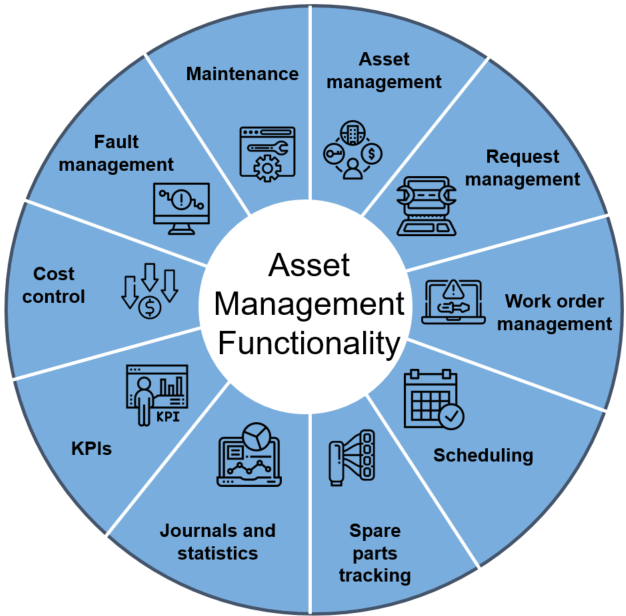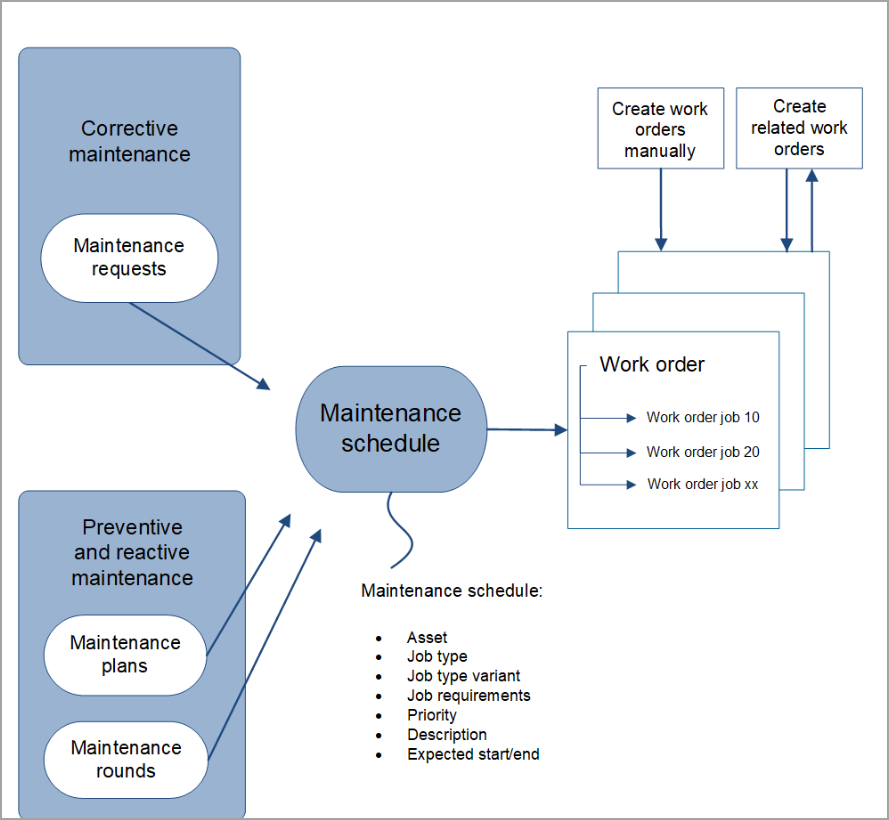Reduce equipment downtime and improve overall equipment effectiveness (OEE), which improves long-term planning agility for your business. Dynamics 365 for Supply Chain Management allows you to maximize asset longevity and uptime by helping you to perform proactive maintenance and create automated processes. Such processes include the ability to resolve product quality issues quickly and efficiently as well as accelerating time to market. Further, decreasing the downtime of critical equipment improves equipment effectiveness, meets the needs of changing customer specifications and reduces costs through agile planning.

Asset Management
Microsoft Dynamics 365 for Supply Chain Management helps you to move from reactive to predictive operations and maximize the life of your assets. By performing proactive maintenance, you can reduce equipment downtime, improve overall equipment effectiveness (OEE), and maximize the longevity of your assets. Asset Management is a module for Dynamics 365 Supply Chain Management that provides advanced tools for managing your physical assets, including tasks and maintenance jobs. Asset Management delivers end-to-end asset management functionality, beginning with the ability to track assets and their physical locations, maintenance planning, orders and scheduling, fault management, reporting, and cost controls. Here are some benefits of Asset Management:
- Integrates seamlessly with several modules in Dynamics 365 Finance and Dynamics 365 Supply Chain Management.
- Enables you to efficiently manage and carry out tasks that are related to managing and servicing many types of equipment in your company, for example, machines, production equipment, and vehicles.
- Allows you to plan for maintenance and track usage and work orders for preventative versus reactive maintenance.
- Reduces maintenance costs while extending the life of your assets and ultimately reducing downtime and increasing the performance of your assets.
- Supports solutions across numerous industries.
Asset Maintenance
Maintenance is essential for long-term asset operations and uptime. Dynamics 365 for Supply Chain Management helps you to extend these asset life cycles with preventive maintenance, which encourages repairs on assets and equipment before they exhibit notable malfunctions. This way, you can prevent unplanned asset failure and downtime and reduce expenses. Further, with Supply Chain Management, there are efficient ways to submit work orders for corrective maintenance due to equipment failure. Maintenance requests are used for corrective or fault maintenance that is required due to equipment failure while maintenance plans and rounds are used for preventative and reactive maintenance.

Work Order Flow for Asset Management
You can create work orders automatically or manually. The following scenarios describe how you can create an automatic or manual work order.
- Automatic work order creation:
- You can have work orders automatically created by setting maintenance sequences and maintenance rounds to Auto-create.
- By creating maintenance schedules based on maintenance sequences, requests, or maintenance rounds, work orders can be automatically created.
- Manual work order creation:
- Create a manual work order on the All work orders page.
- Create a related work order.
- Use the All requests list page.

After you create a work order, the process flow of the work order continues as follows:
- Verify work order – If necessary, edit or update information that is related to the work order or asset. These updates can include:
- Forecasts
- Tools
- Notes
- Faults
- Schedule work order – Three resource types are available in work order scheduling:
- Human resources
- Machines
- Tools
- Update lifecycle state – A Scheduled status means that resource planning has been completed. The In process state means that a maintenance job is ready to be carried out.
- Complete maintenance job – This process flow can be a checklist, production stop, condition assessment, or faults.
- Post journals – The consumption in the form of hours or items.
- Close work order – When the work order lifecycle state has the status of Ended, the maintenance job is complete, and the journals are posted. When the work order lifecycle state has the status of Finished, the work order is closed.
Next Steps
If you are interested in learning more about asset management as well as maximizing the use of Microsoft Dynamics 365 for Finance and Supply Chain Management contact us here to find out how we can help you grow your business. You can also email us at info@loganconsulting.com or call (312) 345-8817.







